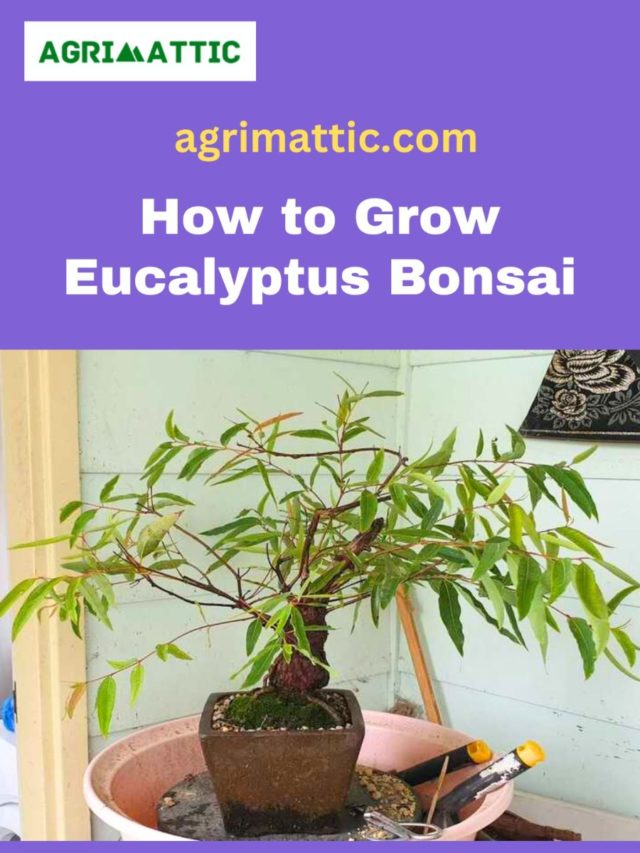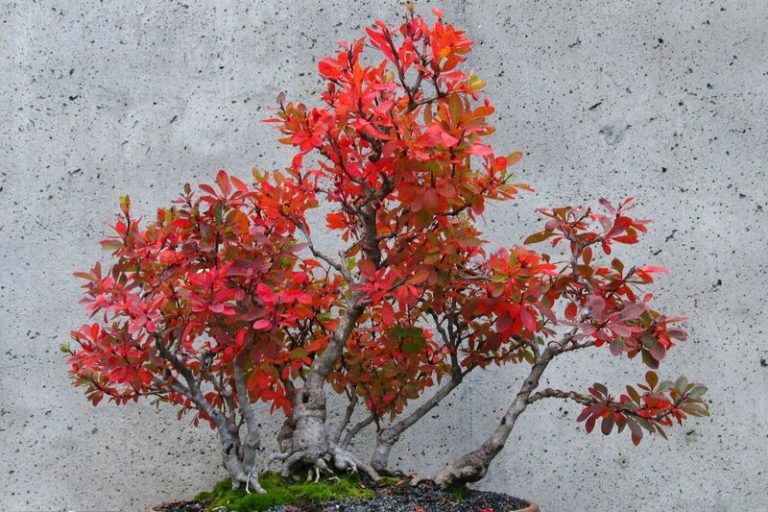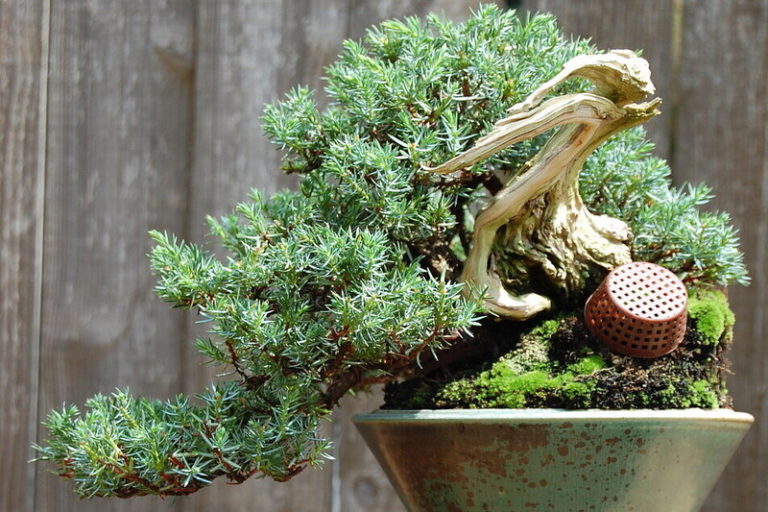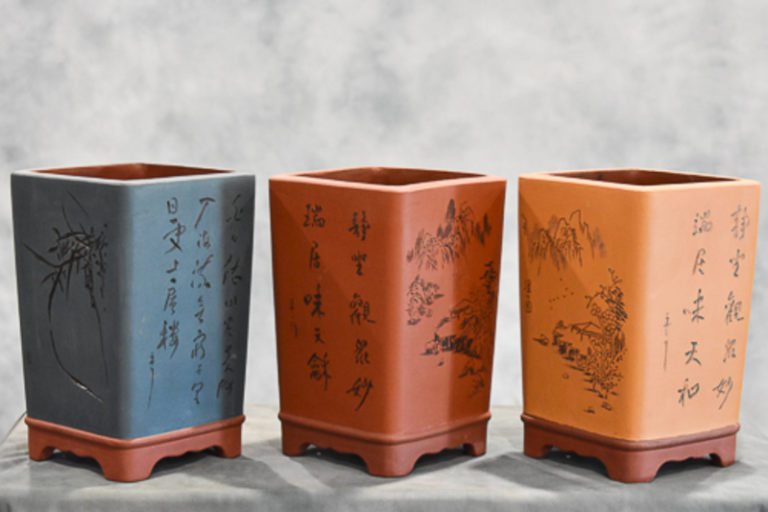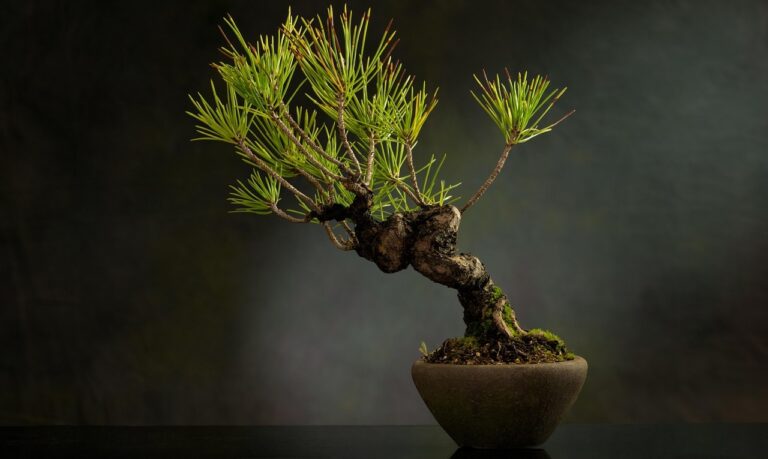Eucalyptus Bonsai : The Perfect Addition to Your Indoor Garden
A eucalyptus bonsai is a miniature version of the real tree. The eucalyptus tree is a type of tree that grows in Australia and stays green all year. It grows so quickly! Bonsai is a small, cute version.
Eucalyptus bonsai is grown indoors or outdoors in containers and is known for its fragrant leaves. Bonsai trees cultivated from Eucalyptus are prized for their medicinal properties, aesthetic appeal, and environmental benefits. They require proper care and maintenance to flourish. Given the right conditions, a eucalyptus bonsai can be a beautiful addition to any home or garden.
What is Eucalyptus Bonsai
Eucalyptus bonsai is a smaller version of the eucalyptus tree that is grown in a container and trained to maintain a small size. The eucalyptus tree is from Australia, but it is now grown in many other countries as well.
The quick growth, fragrant leaves, and distinct perfume of the eucalyptus bonsai tree make it appreciated. It needs regular attention in order to flourish, but it may bring a special touch to your house or garden if given the chance.
Types of Eucalyptus Bonsai
There are several types of eucalyptus bonsai that are commonly grown. Here are a few examples:
- Eucalyptus gunnii: The blue-green foliage and unique aroma of this eucalyptus bonsai tree, sometimes known as the Cider Gum, make it a sought-after specimen.
- Eucalyptus deglupta: This eucalyptus bonsai tree is also called the Rainbow Gum due to the many colors of its bark, which ranges from green to orange to purple.
- Eucalyptus camaldulensis: Also known as the River Red Gum, this eucalyptus bonsai tree is prized for its striking red bark and hardy nature.
- Eucalyptus citriodora: This eucalyptus bonsai tree is known as the Lemon-Scented Gum because its leaves smell like lemons and look really good.
- Eucalyptus nitens: This eucalyptus bonsai tree is known as the Shining Gum because its leaves are shiny and it grows fast.
Each type of eucalyptus bonsai tree has its own unique characteristics, and choosing the right bonsai will depend on your personal choice and the conditions in which you plan to grow it.
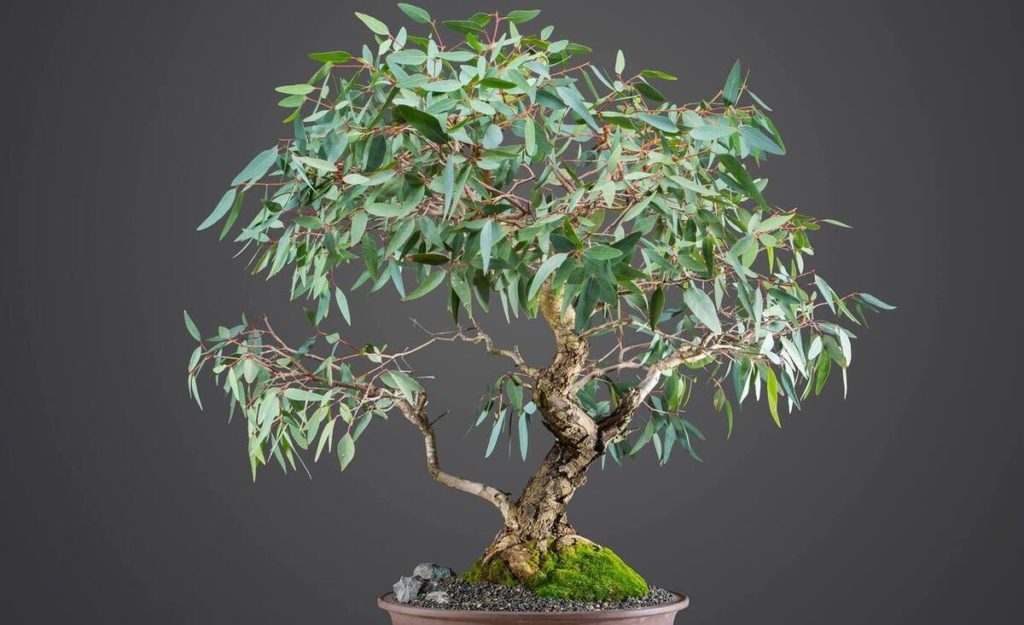
Eucalyptus Bonsai and Its Symbolism
Eucalyptus bonsai trees are not only beautiful to look at but also carry deep symbolic meanings. Here are some of the meanings associated with eucalyptus bonsai:
- Healing: Eucalyptus bonsai plants have therapeutic characteristics and are said to promote physical and mental healing. Several medicinal therapies make use of the oil derived from eucalyptus leaves.
- Protection: Eucalyptus bonsai trees are believed to have protective properties and are often planted around homes and gardens to ward off negative energy and protect the inhabitants.
- Renewal: Eucalyptus bonsai trees are associated with renewal and new beginnings. They are believed to promote growth and regeneration, making them a popular choice for new homeowners or those going through major life changes.
- Prosperity: Eucalyptus bonsai trees are thought to bring prosperity and abundance into the home. The leaves are often used in money-drawing rituals and are believed to attract wealth and success.
Eucalyptus bonsai trees are recognized for their environmental advantages as well as for symbolic implications. They are well-known for their capacity to absorb carbon dioxide and release oxygen, making them a good choice for enhancing indoor air quality.
Characteristics of Eucalyptus Bonsai
Eucalyptus bonsai trees are different from other kinds of bonsai trees in a number of ways. Here are a few main factor about eucalyptus bonsai:
- Aromatic leaves: Eucalyptus bonsai trees are recognized for their aromatic leaves, which emit an unique fragrance that many people like.
- Fast growth: Eucalyptus bonsai trees are noted for their rapid growth rate, which allows them to swiftly fill out and produce their characteristic form.
- Unique bark: Many species of eucalyptus bonsai trees have unique bark that can range in color from green to red to purple. Some eucalyptus bonsai trees even have bark that peels away in colorful strips.
- Evergreen foliage: Evergreen indicates that Eucalyptus bonsai trees retain their foliage year-round. This makes them an excellent option for those who wish to appreciate the attractiveness of their bonsai tree throughout the winter.
- Hardy nature: Evergreen means that Eucalyptus bonsai trees keep their leaves all year long. This makes them a good choice for people who want to enjoy their bonsai tree’s beauty even in the winter.
Overall, eucalyptus bonsai trees are a unique and beautiful addition to any collection, and their distinctive characteristics make them a popular choice among bonsai lover.
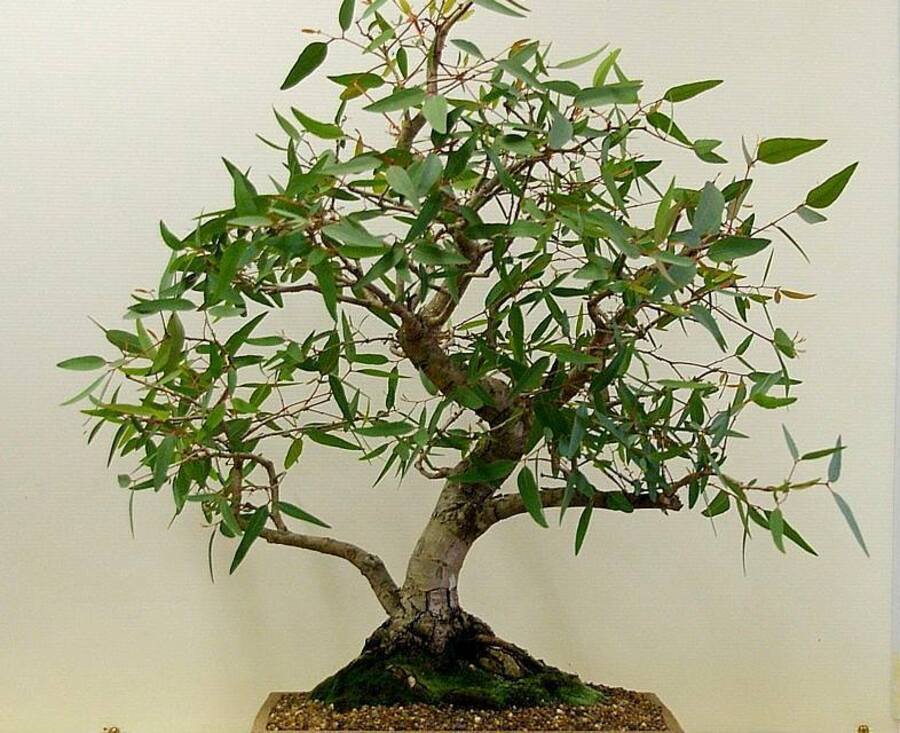
How to Grow Eucalyptus Bonsai
A few essential steps must be taken to ensure that eucalyptus bonsai trees thrive and attain their maximum potential. Here are the fundamental stages for cultivating eucalyptus bonsai:
- Choose the right soil: Eucalyptus bonsai trees require a nutrient-dense soil that drains properly in order to thrive. One viable approach is to make use of peat moss, perlite, and coarse sand in equal parts.
- Water regularly: Eucalyptus bonsai trees need to be watered regularly, especially during the growing season. Make sure to water deeply and allow the soil to dry out slightly between watering.
- Provide proper light: Eucalyptus bonsai plants need a lot of sun to flourish, so it’s important to put them in a sunny spot. If you live in a warm place, you may need to provide shade during the hottest part of the day.
- Fertilize regularly: Eucalyptus bonsai trees benefit from regular fertilization to promote healthy growth. Use a balanced fertilizer with equal amounts of nitrogen, phosphorus, and potassium.
- Prune and shape: Eucalyptus bonsai trees grow quickly and can become unruly if not pruned regularly. Use sharp pruning shears to remove any dead or diseased branches, and shape the tree as desired.
- Repot as necessary: Bonsai trees made from eucalyptus should have their soil replaced every two to three years to promote good growth.
By following to these basic procedures, you will be able to cultivate a bonsai tree from a eucalyptus cutting that is not only attractive but also strong and will provide you years of pleasure.
Benefit of Eucalyptus Bonsai
There are many benefits to growing eucalyptus bonsai trees. Here are some of the most significant benefits:
- Aesthetically pleasing: Bonsai trees made from eucalyptus trees are stunning to see and may improve the visual quality of any room, whether indoors or out.
- Medicinal properties: Eucalyptus leaves contain essential oils that have many therapeutic properties. The oil is commonly used in aromatherapy to promote respiratory health and relieve stress.
- Air purification: Eucalyptus bonsai trees have been shown to purify the air by absorbing harmful pollutants and releasing oxygen into the environment.
- Insect repellent: The strong aroma of eucalyptus leaves can repel insects and pests, making it a natural and eco-friendly pest control solution.
- Therapeutic benefits: The aroma of eucalyptus is known to have a calming and relaxing effect, making it a popular ingredient in many bath and body products.
- Biodiversity: Growing eucalyptus bonsai trees can help promote biodiversity by providing a habitat for birds, insects, and other small animals.
- Personal satisfaction: Growing and maintaining a bonsai eucalyptus tree can be a rewarding and satisfying hobby that provides a satisfaction and personal fulfillment.
Overall, eucalyptus bonsai trees offer a wide range of benefits, from their aesthetic appeal to their therapeutic properties and environmental benefits.
Styling and Design for Eucalyptus Bonsai
When it comes to styling and design for eucalyptus bonsai trees, there are several options to consider. Here are some ideas to help you get started:
- Formal upright style: This style involves training the tree to grow straight up with a symmetrical shape. It’s a classic style that works well with eucalyptus bonsai trees.
- Informal upright style: This style allows for more natural growth patterns, with a slight curve in the trunk and asymmetrical branching. This style can give the tree a more natural and organic look.
- Cascade style: This style involves training the tree to grow downwards, with the branches and leaves cascading over the edge of the container. This style can be dramatic and visually striking.
- Broom style: This style involves training the tree to grow with a straight trunk and symmetrical branching. The branches should be pruned to create a broom-like shape, with the foliage forming a dense ball at the top.
- Multi-trunk style: This style involves growing multiple trunks from the same root system, creating a unique and visually interesting bonsai tree.
Eucalyptus bonsai trees look great in both traditional and contemporary settings. They look beautiful in a variety of container shapes and may be exhibited inside or outdoors. Try using a basic, unglazed container to let the tree shine, or a more decorative container to provide aesthetic interest.
Overall, the styling and design options for eucalyptus bonsai trees are limited only by your imagination. Take the time to experiment and find a style that speaks to you and complements your space.
How to Care and Maintain Eucalyptus Bonsai
Caring for and maintaining eucalyptus bonsai trees is straightforward, but it does need some attention to detail. Here are some pointers to maintain your eucalyptus bonsai healthy and flourishing:
- Watering: Regularly moisten Eucalyptus bonsai trees, but be cautious not to overwater them. Water thoroughly when the soil becomes arid to the touch, but ensure that the container has adequate drainage to prevent root rot.
- Fertilizing: Regular fertilizer during the growth season is beneficial for Eucalyptus bonsai trees. For optimal results, use a balanced fertilizer according to the manufacturer’s directions.
- Pruning: Frequent trimming is required to keep your eucalyptus bonsai in form and health. To stimulate new development, prune back any dead or diseased branches and cut back the foliage.
- Repotting: To keep the roots from growing too confined, Eucalyptus bonsai plants should be repotted every two to three years. Repot in new, well-draining soil and prune the roots as needed.
- Light and temperature: Eucalyptus bonsai trees enjoy bright, indirect light and warm temperatures. Avoid exposing them to direct sunlight, which can burn the foliage. Throughout the winter, keep them in a warm, draft-free location indoors.
- Pest control: Pests such as spider mites and scale insects can attack Eucalyptus bonsai plants. Inspect your tree for symptoms of infestation on a regular basis and treat with a suitable pesticide if necessary.
Eucalyptus Bonsai Care Sheet
| Aspect | Care Tips |
|---|---|
| Watering | Water regularly, when the soil feels dry to the touch. Ensure good drainage to prevent waterlogging. |
| Fertilizing | Fertilize during the growing season with a balanced fertilizer according to package instructions. |
| Pruning | Regularly prune back dead or diseased branches and trim back foliage to encourage new growth. |
| Repotting | Repot every 2-3 years with fresh, well-draining soil, and trim back roots as needed. |
| Sunlight | Prefers bright, indirect light. Avoid direct sunlight to prevent leaf scorch. |
| Pest control | Check regularly for spider mites and scale insects, and treat with an appropriate insecticide if necessary. |
By following these care and maintenance tips, you can ensure that your eucalyptus bonsai tree remains healthy and beautiful for years to come.
Conclusion:
Eucalyptus bonsai trees offer a beautiful and symbolic touch to any bonsai collection. They have grown in popularity among bonsai enthusiasts due to their distinct look and purpose. Growing and maintaining eucalyptus bonsai trees is relatively simple, requiring regular watering, fertilizing, pruning, repotting, and pest control.
They are a flexible and fun plant to deal with since they can be fashioned and decorated in a variety of ways to suit individual preferences. Overall, eucalyptus bonsai trees are an intriguing and satisfying plant to cultivate, adding beauty and meaning to any living room or outdoor environment.
FAQ:
Q: What is eucalyptus bonsai?
A: Eucalyptus bonsai trees are miniature versions of the eucalyptus tree, which is native to Australia. They are typically grown as ornamental plants for their unique appearance and symbolic meaning.
Q: Can eucalyptus bonsai trees be grown indoors or outdoors?
A: Depending on the kind and environment, eucalyptus bonsai trees may be cultivated both indoors and outdoors. To avoid leaf burn, they appreciate bright, indirect light and shelter from direct sunshine.
Q: How often should I water my eucalyptus bonsai tree?
A: Water Eucalyptus bonsai plants on a regular basis, when the soil seems dry to the touch. Maintain proper drainage to avoid waterlogging, which can lead to root rot.
Q: When should I fertilize my eucalyptus bonsai tree?
A: During the growing season, typically from spring to autumn, Eucalyptus bonsai trees should be fertilized with a balanced fertilizer according to the instructions on the packaging.
Q: How often should I prune my eucalyptus bonsai tree?
A: Eucalyptus bonsai trees should be trimmed periodically to eliminate dead or diseased branches and stimulate new growth.
Q: How often should I repot my eucalyptus bonsai tree?
A: Eucalyptus bonsai trees should be repotted every 2-3 years with fresh, well-draining soil, and roots should be trimmed back as needed.
Q: What pests should I watch out for with eucalyptus bonsai trees?
A: Spider mites and scale insects can infest bonsai trees made from Eucalyptus. Regularly inspect for signs of infestation, and apply the appropriate insecticide if necessary.
Also Read:


